St John's Wood Park 1901 - 1930s Living in the Park
Beatrice Curtis Brown and Patricia Champness
At the beginning of the 20th century two girls, born ten years apart, lived in St Johns Wood Park and luckily they both left a written account of their way of life there during their childhood. (Beatrice Curtis Brown Southwards from Swiss Cottage 1947 and Patricia Champness Holborn Public Library Copy number 072439 Shelf number 89.3)
The first was Beatrice Curtis Brown (1901 – 1974). Her father was Albert Curtis Brown, an American journalist and literary agent, who had come to London and founded the Curtis Brown Literary Agency in 1899. He and his wife Caroline, with Beatrice and their son Spencer (born 1906), lived at No 4. In 1911 they had a married couple as manservant and cook and a parlour maid to look after them in their “large square house, joined like a Siamese twin, to another identical with it. Every house was built about the same period, between 1830 and 1860 I would say, and most of them were stucco fronted and painted in white or pale colours. They were set back from the road with a garden in front and behind. Lilacs were abundant in the gardens, and many gardens had pear trees, left over from the days when orchards had flowered down Finchley Road. Opposite us was a great rocky house with a tower, surrounded by an immense and desolate garden. We called it The Haunted House. Someone told us that the door of the top room would never stay shut. I do not remember anyone ever living there.
Twelve stone steps led up to our front door which in summer and autumn was hidden by a curtain of virginia creeper. In front of the dining room windows were three lilacs. At the side of the house was a heavy green wooden door into the back garden and beside it was a laburnum tree. Best of all were the lilacs that stood beside the wooden steps that led from the french windows of the drawing room down to the back garden. The greater part of the back garden was taken up by a circle of lawn. Along one side of this was an herbaceous border, while on the other side stood a couple of lime trees between which the hammock swung.
The second girl was Patricia Champness(1911 – 198?), the great grand-daughter of John Gardner, the original owner of No 28, and her mother was Cicely Champness, nee Gardner, the daughter of Edward Gardner, who had moved in with his father, John, earlier. Patricia was born in the house in St John’s Wood Park and left as a young woman. She noticed that there were no typical St John’s Wood cottage ornees or Gothic houses on the Park, which instead had large houses suitable for large Victorian families, with reception rooms, private sitting rooms, lots of bedrooms and ample staff quarters. She wrote that the place was full of music, drawing and painting, and children and adults gave private entertainments and also performed for charities. Beatrice too noticed the music that pervaded the street: An opera singer used to practice his exercises in the house across the street–and the neighbours must have been very familiar with the sound of my mother playing Chopin on the drawing room piano.
Louise Kirkby Lunn (1873 – 1930)
One of the operatic singers Beatrice heard may have been contralto Louise Kirby Lunn who lived in the Park at some time and, for the first two decades of the 20th century, was a leading singer with the Carl Rosa Opera Company, and sang at Covent Garden. Married to William Pearson, the manager of the Wigmore Hall, she first appeared there in 1902 and gave her first full recital in 1906. She was famous for her Delilah in Samson and Delilah, and for Gluck’s Orfeo. In 1909, she sang Elgar’s Sea Pictures with Elgar conducting the orchestra.
Walter Hyde,(b. 1875)
could have been another singer; he was a tenor who had begun his career in musical comedy but, in 1908, at Covent Garden had a tremendous success in The Ring cycle. He eventually shared the emotional scenes at Louise Kirkby Lunn’s farewell in Parsifal. (He was still living in the Park in 1933 with his wife and Wagnerian son Walter Siegmund)
Carol singers
At Christmas the houses were visited by waifs who only sang three carols, including Good King Wencelas and While Shepherds Watched, in a doleful way and then were rude if you did not give them a penny. The night before Christmas, Beatrice wrote, the house was fragrant with the smell of fir. Into the hall would be carried the christmas tree, trussed up with rope and a great mass of holly – we made coloured paper into chains and strung it across the nursery ceiling. We stuck up holly all over the house. We parcelled up our presents in white tissue paper and red ribbon. Last thing before we went to bed we hung our stockings up before the dining room fire.
Mr Brown, the grocer, also remembered carol singing: Christmas time was one of great excitement and preparation. After being fully initiated into the local child population, one of my dearest memories is carol singing. Oh yes, we carried lanterns on the end of sticks and rapidly learnt which were the best houses to sing at. A penny was expected, twopence and we bowed ourselves gracefully out but for sixpence and over we just kept our mouths shut to the rival carollers and made a note to call again. But, for all of this, the whole atmosphere was so different. Gas lighting in the streets was dimmer but softer, the houses were aglow with light and the occupants seemed warm and friendly. I cannot remember ever being chased away for singing carols although, and again I freely admit it, I am tone deaf and just could not keep in key.
Patricia said the Park children knew every nook and cranny of the road, where there were many errand boys, maids and nannies walking in the street, and barrel organs emphasising, not disturbing, the road’s tranquillity. Parkites, as she called them, mingled formally, leaving visiting cards, or informally, dropping in for hours.
The 1901 census
showed that eleven properties were being looked after by coachmen or other servants while families presumably were away. There were two colliery owners, and merchants in hops, provisions , woollens, leather, hides, and precious stones. There was a saddle and harness maker, a tea broker and a builder. In the professional class there were two retired major generals, two stockbrokers, a civil engineer, a company director and advertising agent, a general practitioner and a dentist. Association with the arts produced a lady novelist, an artist who had been a civil servant, an architect, a journalist, a music seller, a fine art dealer and Mr Nathan, the theatrical costumier. Living on their own means were four widows and two single women and nine men, including Edmund Gardner, now the head of his father’s house, John Edmund Gardner having died, in 1899.
Some of the residents had been there for many years. Trotman Foster had his brother living nearby and, Dr Greenwood, previously living with his brother, was now married and Mr Nathan had another son. The Monsells who featured in the 1881 census were still at no 36 and the Heydermanns were still at no39, and Emily Luxmoore, sister of painter and sculptor Arthur C H Luxmoore, who had lived at no 18 since 1861, latterly with her widowed father, was now alone at no 18, apart from a cook, housemaid and parlourmaid. Among the servants there were fewer men servants – a butler and a footman seem the only ones not connected with working with horses but 28 houses had 3 or 4 female servants, including 10 nurses, 1 governess, I companion and 1 ladies maid.
Major General George Carter, aged 78,
was living at Ravensworth with his 36 year old wife Lillian, a cook, parlourmaid and groom, and had applied to the Eyre estate, in May1894, for permission to make alterations to the stables. The present one had 3 stables and a loose box but one stable was in a dangerous condition so it was to be demolished and used for access to 2 new loose boxes and a tool shed. The yard was sheltered from the houses on the east side of the road so, presumably, the residents there would not have to look at the new building.
Some of the residents were connected to the arts
Jerusha Richardson,
at no 26, aged 36, married to solicitor Aubrey Richardson, one of the few married women to have an occupation in the census, she was an authoress who wrote Famous ladies of the English Court, in 1899, the Life of Catherine of Siena and the Doges of Venice. Her father was wealthy Richard Hunting, who first introduced the sewing machine to Britain. She worked for many local charities and during World War One her work at army hospitals at Willesden and Dollis Hill resulted in her being awarded the OBE.
John Slater (1848–1921)
at no 11, was an architect from Bishops Stortford, who had set up in practice in London, in 1872, and become ARIBA, in 1879, was surveyor to the Berners Estate, in 1891, until 1911 when he set up in private practice, with his son John.
E J Duveen, and his brother
were staying as visitors At no 21 with Mr Barker. Born in Hull, they were part of the Duveen family of art dealers who had come from Holland to Hull to sell delftware and then Chinese porcelain, furniture and old masters. The Duveens, eventually monopolised the American art market for decades, forming the art collections of wealthy Americans, which were later the foundation of the Frick Collection, and were the nucleus of the National Gallery of Art. They were also benefactors to British galleries. In 1912, Edward J Duveen published Colour in the Home with notes on architecture,paintings, decoration and good taste
Robert Partridge and his wife Doris
lived at 25 for many years. They first appear in the 1901 census; Doris was the daughter of a London antique dealer who had a real understanding of how the markets worked. Robert learned about antiques from them and then took a shop in Great Portland Street, which was stocked with fine quality goods and was the start of their fine art business.
Will Andrews
a groom, was already in their employ, living above the stables. He was one of 4 stablemen they employed to look after their 8 horses and five carriages. Every morning, he drove Mr Partridge to work, then at 3pm he drove Mrs Partridge round Hyde Park for two hours, picking up Mr Partridge from his business for the return journey.
In the 1911 census
Robert Partridge was expanding his fine art business and moving to St James Street and then New Bond Street. In 1905, he acquired a secretaire made from pieces of a famous cabinet made, in 1790, to designs of Sir William Chambers, and decorated by William Hamilton RA, which he took on the liner Lusitania, to New York, and displayed it there. It was bought by MGM, and was used in many films until MGM finally sold, in 1970
Henry Currie Marillier,
at no 37, was a journalist, critic and art historian, married to his second wife Winifred Christabel Hopkins, the composer of ‘The Rose and the Ring’. He acted as the managing director of Morris & Co,(and was himself an expert on tapestries) and was a correspondent of Oscar Wilde and James Whistler. In 1899, Marillier wrote Dante Gabriel Rossetti: An Illustrated Memorial of His Art and Life, and the preface to the Early Works of Aubrey Beardsley, printed by the Swan Company,in 1899. In 1904, he wrote The Liverpool School of Painters 1810-67.
First World War
The First World War with its Zeppelin raids disturbed the peace of the Park. On the 31st of May, 1915, the first raid was carried out against London, killing seven and injuring thirty five.The most successful Zeppelin raid on London in the entire war was on the 8th of September 1915. This raid caused more than half a million pounds of damage, almost all of it from the one Zeppelin, the L13, which managed to bomb central London. This single raid caused more than half the material damage caused by all the raids against Britain in 1915.
During a raid the Curtis Brown family went down to the kitchen which was roomy and almost below ground level. There were thuds from the bombs and a moaning scream and explosion from our own AA guns – there was one quite near in Finchley Road.The raids got less enjoyable as they went on. The cook used to sit and, with a kind of melancholy relish, tell us stories of disaster from the last raid. And after what seemed a very long time, the boy scout’s bugle would be heard signalling the all clear. One night Beatrice Curtis Brown heard a great roar which was the noise of Londoners cheering the first shooting down of a Zeppelin in flames. Patricia Champness noted that the observatory built by her great great grandfather John Edmund Gardner meant that they could see Zeppelins as well as sunsets.
But Zeppelins were not the only bombers. On 7 March 1918 bombers powered by four engines and carrying a crew of eight from squadron RF501 took off to bomb London and swooped over St John’s Wood dropping bombs in Townshend Road and a one ton bomb on 63 and 65 Warrington Crescent. The planes escaped untouched by RAF fighters.
1930s
The Park began to notice some changes in the 1930s when the first block of flats, Park Lodge 1933-34 (Wimperis, Simpson & Guthrie) was built, replacing two of the houses at the northern end. The flats provided a bedroom and bathroom for the expected living-in servant.
The Electoral Register of 1933 shows a variety of residents such as Hon Ferdinand Charles Stanley (1871 – 1935) who fought in the Boer War and the First World War, winning the DSO and being mentioned in despatches, and lived with his wife and son at no 13. Mr Brown remembered: The families had their own staffs, often as many as nine or ten strong. The staff here (at no 13)) consisted of a butler, two footmen, coachman, housekeeper, ladies maid, parlour maid, tweeny maid, cook and kitchen maid. The girls’ uniforms were maroon with old gold cuffs and collars. All were very smart, efficient and intelligent people and contrary to what some misinformed persons would have us believe today, were very, very happy in their positions. I can remember the quiet dignity of these girls, recall the gaiety of their characters and also the willing hard work as the great kitchen hummed of the preparation of an exotic dinner party.
At no 29, one of the three houses in the central triangle, known as Cotswold and with spacious rooms and lovely colour schemes, lived Owen Nares, the heartthrob actor of his generation, both in films and on stage in the West End, being blessed with good looks and a debonair manner. His first role was played, in 1909, and he was immensely popular in middlebrow plays, a matinee idol adored by his fans. He appeared in 40 films, most of them silent, but because of his stage experience he was able to make the change to ‘talkies’ without difficulty. He was, also, a theatre manager and producer.
He was married to Marie Polini, an Anglo-Italian beauty, who organised the business aspects of their lives and they had two boys, David and Geoffrey. In 1935, he acted with Fay Compton in Dodie Smith’s Call It a Day, a play about a family living in St John’s Wood.
One literary figure, whom Mr Brown called another great character of the Wood who lived in St John’s Wood Park, was Denis Wheatley (1897 – 1977) at no 8. He had served in the First World War, being gassed at Passchendaele, and inherited a wine merchant business from his father, but this declined in 1931 due to the financial depression, so he decided to write. His first novel was The Forbidden Territory, in 1933, which was a great success, followed by the occult story The Devil Rides Out, which James Hilton said was the best thing of its kind since Dracula. He also wrote a series of mysteries as Case Dossiers, in which letter, testimonies, pieces of evidence, like hair or pills were packaged together and readers had to try and solve the problem. His main characters usually supported Royalty, the Empire and the class system and would strongly fight for personal liberty.
In his memoirs Drink and Ink (Hutchinsons 1979) Dennis Wheatley describes No 8 as semi-detached with a small front garden behind a stone balustrade and a larger garden behind the house. Ours was big enough for a fair-sized lawn and a broad herbaceous border and had a fifty foot oak tree at its far end. As our garden backed on to the much larger garden of a house on the Finchely Road, which was mainly orchard, in spring the room on the first floor where I did my writing looked out on a sea of blossom and, until late autumn, the leaves of the trees formed a screen through which no other house could be seen. Wheatley said the area had been a favourite rendezvous for fighting duels in the past and our landlord, a charming old gentleman, came to hand over the keys of the house to me personally. He told me that as a boy he had picked bullets from the trees with his penknife.
There were quite a few residents connected with medicine in various ways. Victor Wilkinson Dix (1899 – 1993) was a Fellow of the Royal College of Surgeons, and Russell Brain a Fellow of the Royal College of Physicians, while Charles Yarrow Eccles (1889 – 1985?)was an orthodox physician who converted to homeopathy. Sir Walter Kinnear was a civil servant who wrote a report on the Health and Pensions industry, while Sir Francis Morris was chairman of various committees dealing with England’s first state hospitals. In the business world, Arthur Mitton Dickson was a director of the AngloInternational Bank in Lombard Street, Ronald Cunliffe Turner (1906 – 1980) a merchant banker and Campbell Murray Hunter was an old Etonian consulting engineer and petroleum technologist, president of Hunter Valley Oil Company.
Edmund Sidney Pollock Haynes, (1877 – 1949)
was a lawyer in the crescent at no 38 ; he had been a King’s Scholar, at Eton, and practised in Lincolns Inn. His wife, Oriana Huxley Haynes, was a grand daughter of Thomas Huxley and they had two daughters, Renee Oriana (aged 4) and Celia (aged 1). Haynes was a supporter of divorce reform and also a prolific writer and a well-known figure in London’s literary circles for fifty years. Mr Brown described him as a charming old solicitor, who was I am told, known as “dirty ted” in legal circles. Perhaps it was the egg on his tie, the smell of garlic when he came too close or just the shabby eccentric clothes that he wore that gave him this title, but whatever it was, I found him to be generous to a degree, extremely intelligent, soft hearted as a baby or fierce as a lion – depending on the mood and the moment. He could swear more than any Sgt Major and looked as if he had stepped out of Dickens Bleak House. He had a manservant who, though a likeable lad, was at times just a little strange. At dinner one night in 1938 he entered the dining room and apologised “For the mess, but all of the other houses in Crescent have been destroyed by bombs sir” he was told to get out and sober up but, about 1943, this actually happened and 38 was the only house left in anything like a habitable condition.
For it was the Second World War that set in motion the destruction of the old St John’s Wood Park.

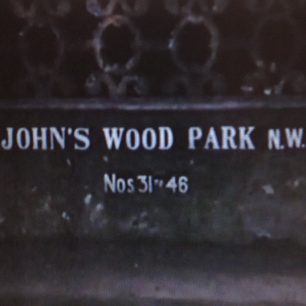
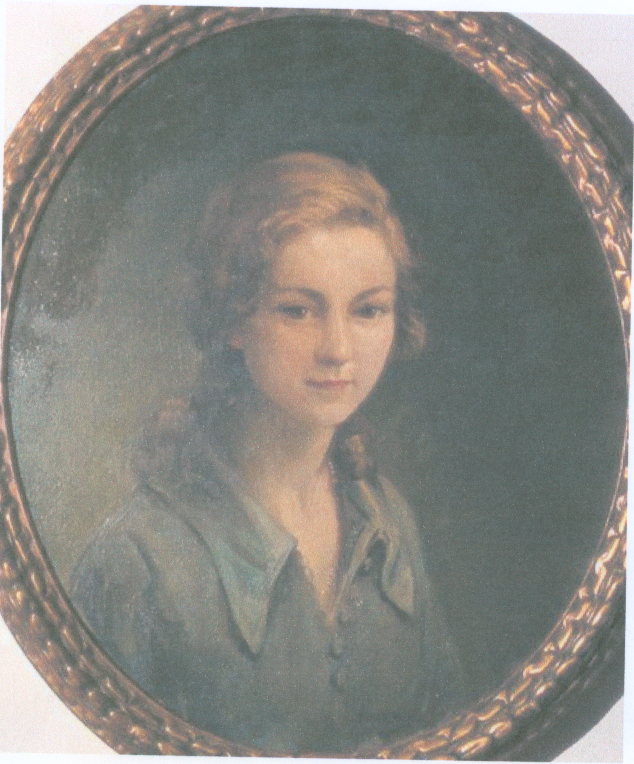
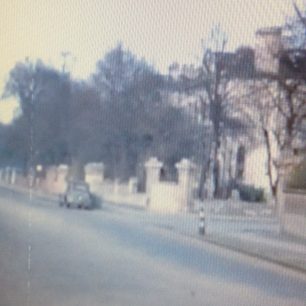
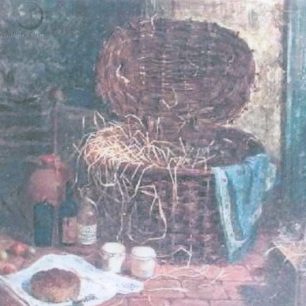
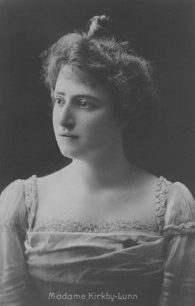
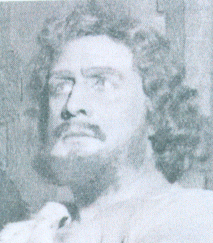
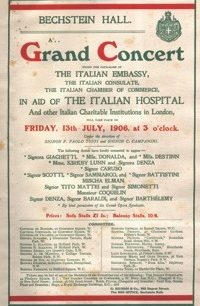
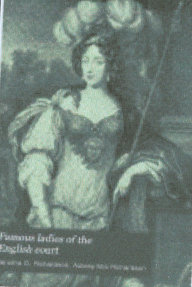
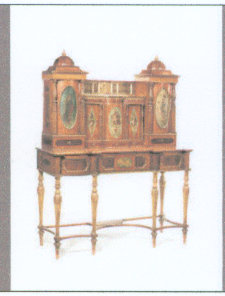
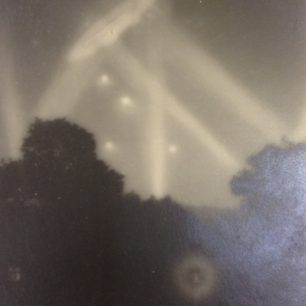
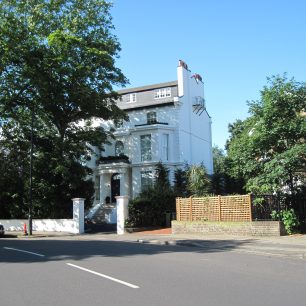
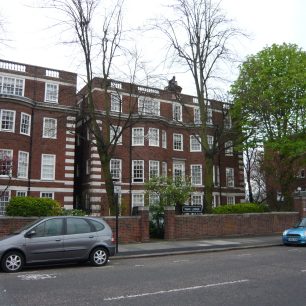
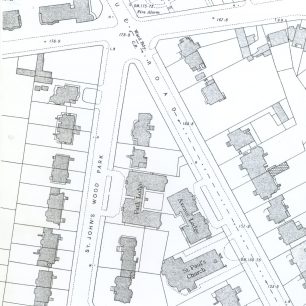
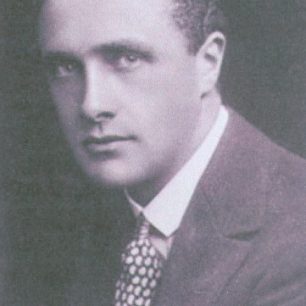
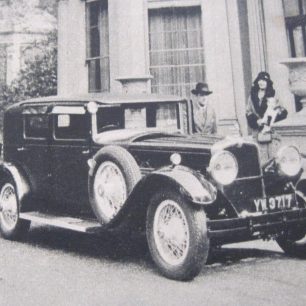
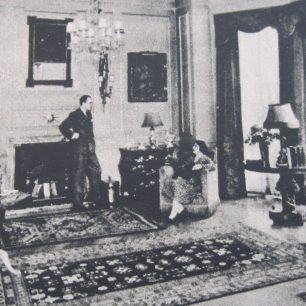
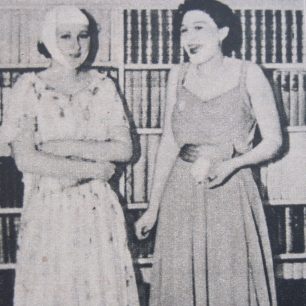



Comments about this page
Brilliant piece. My Great Grandmother was a Cook and my Grandmother a maid in ‘The Park’ working for the Wiltons around 1901 and 1911.
Add a comment about this page